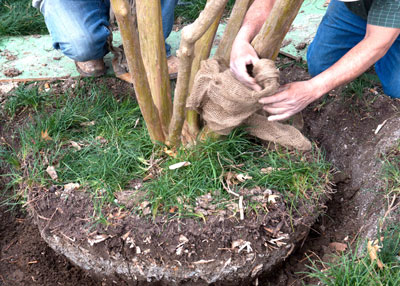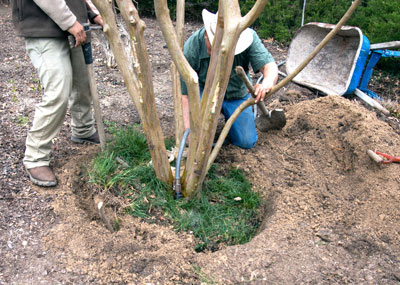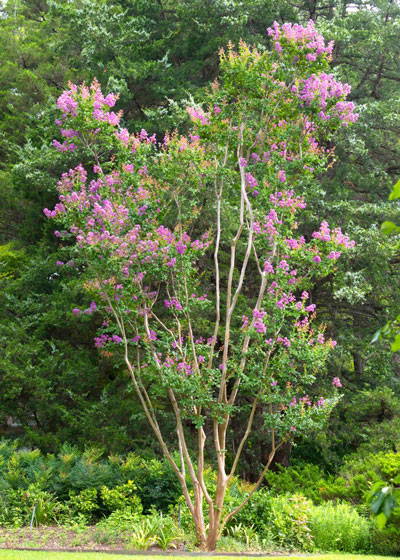Question of the Week – Number Two: January 7, 2021
“I understand that winter is the time to dig and move trees in my landscape. We are adding onto our house, and I have a few plants I would like to try to save. Do you have any suggestions to help improve my odds of success?”
Be patient as you undertake this process. That’s especially critical with larger plants. Moving them will involve cutting larger roots, and that will take time.

Veteran tree diggers will start with a trench around the plant. Use a sharpshooter spade to dig that trench. For a tree with a 2-inch trunk diameter, your trench should be approximately 14 inches out from the trunk. That will result in a soil ball that is 28 or 30 inches in diameter. That’s just a general guideline, and you may need to adjust it according to each specific tree.
Once you have dug the trench, you can use the sharpshooter spade to taper the soil ball slightly. Cut all the lateral roots carefully, using lopping shears or a pruning saw as necessary. Finally, you’ll have to cut the taproot as well.
Use a round-pointed shovel to take soil out alongside the tree so that you can slide the sharpshooter spade in beneath the soil ball. Cut the taproot and any other roots that may still be intact.
At that point you’re ready to wrap the ball of soil in burlap. Secure the burlap and lift the tree by the soil ball as you transport it to its new home.

Plant the tree at the same depth at which it had been growing. Stake it and secure it with padded guy wires to hold it taut and vertical. Leave the wires or cables in place for 1-2 years. Water the tree thoroughly, and prune to remove branches proportionate to the roots lost during the digging.
Your newly transplanted tree may not do a lot of growing its first year or two after being moved (especially if it’s large). It will be establishing new roots. But after a couple of years it should be filling in and starting to grow handsomely, and by then your efforts will really start to pay off.

